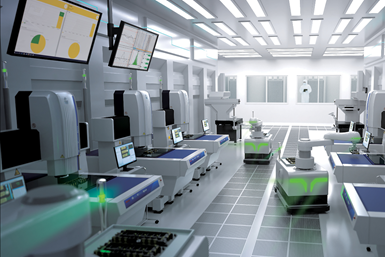Mitutoyo AI Inspect Software Automates Visual Defect Analysis
Software functionality enables users to develop inspection routines for automated implementation of defect detection using image sets.

AI Inspect enables users to develop inspection routines for automated implementation of defect detection using image sets.
Mitutoyo America Corp.’s AI Inspect Software is designed to identify defects in multiple applications and assist manufacturers with visual defect analysis. The software features a multimodular design which includes both training and runtime modules.
The training module contains functionality which enables users to develop inspection routines for automated implementation of defect detection using image sets using various methodologies. The project management of image sets includes importation, organization and storage of user-defined inspection projects. Import and classification features integrated tool sets and techniques for loading and classifying both normal (good) and defect (bad) image sets.
Defect marking provides a simplified user interface for the operator to mark or highlight defects on images. The training setup enables operators to perform a wide range of tasks, including training mode with testing, analysis and optimization of defect detection models. The image augmentation section enables operators to apply advanced techniques to the inspection models such as brightness, noise and focus to reduce the influence of typical image aberrational factors that may influence the accuracy of the training model.
Within the training, the software provides status for the operator to visualize the progress and success of the training sequence. Results and thresholds include a graphical user interface that enables the operator to review a number of predictions related to the trained model. These include image classifications and predictions, pixel predictions and defect size thresholds, and the overall model prediction of normal, uncertain, defect and misclassified trained model components.
The deploy portion of the training module publishes the model for inspection, while the ability to publish the model and provide a unique identifier completes the entire deployment process.
Finally, the runtime module enables the trained AI module to be incorporated into an inspection system. Included in this model is the inference testing application that enables review of the AI model for sample testing on new images.
Related Content
-
Reinventing the Wheel with Robot-Automated CNC Multitasking
One race team discovers how to efficiently manufacture a new wheel nut design for the next-generation NASCAR stock car with the help of a CNC mill/turn and a built-in robot.
-
Zoller Event Shines Lights on Shopfloor Connectivity
The company’s open house event highlighted smart manufacturing solutions from CAM to part.
-
4 Bright Ideas for Effective Lights-Out Machining
Adopting lights-out machining involves considerations when a machine shop decides to move forward with the process. Here are some tips to a successful implementation.















.jpg;maxWidth=300;quality=90)
